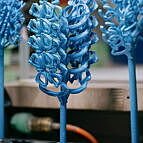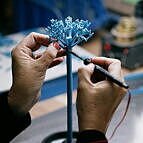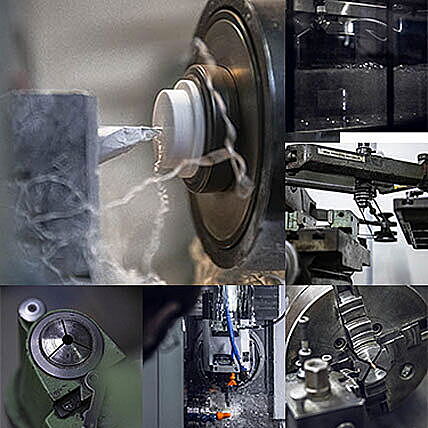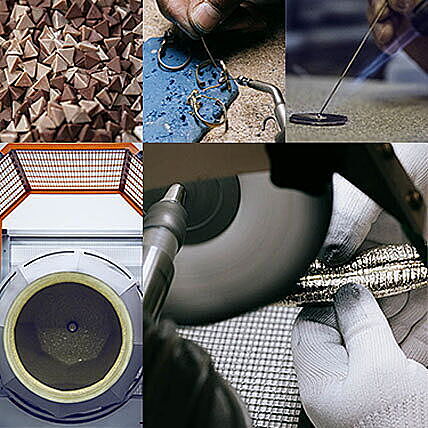Metallic processes
Molding
A savoir-faire essential for producing pieces in resin or metal, the technique of molding consists of bringing a shape to a silicone base in which a material will then be cast. The process enables the piece to be produced in a series. For resin or tin components, the material is shaped by being poured into round silicone molds, while individual molds are used to create brass or silver pieces.
Metal casting
This is an age-old technique. As heirs to generations of blacksmiths, lost wax casting craftsmen perpetuate this process. It entails slowly melting a wax model, leaving an empty space to be filled by the brass or silver metal. This meticulous technique makes it possible to seamlessly cast small, complex pieces with exquisite precision. The tin-casting technique is more recent, dating from the early 20th century. Small pieces such as buttons are poured into molds in a variety of shapes to quickly and efficiently produce a great number of pieces.
Machining
Certain pieces – whether more technical or more refined – require a cutting step called “machining.” Chopping, scooping, shaping the shank of a button, or even laser-engraving a piece: several machines are used to bring the final shape to what begins as a plain, flat block. A watchmaking machine, a true high-tech gem, chisels the material with infinite precision to produce complex pieces.














